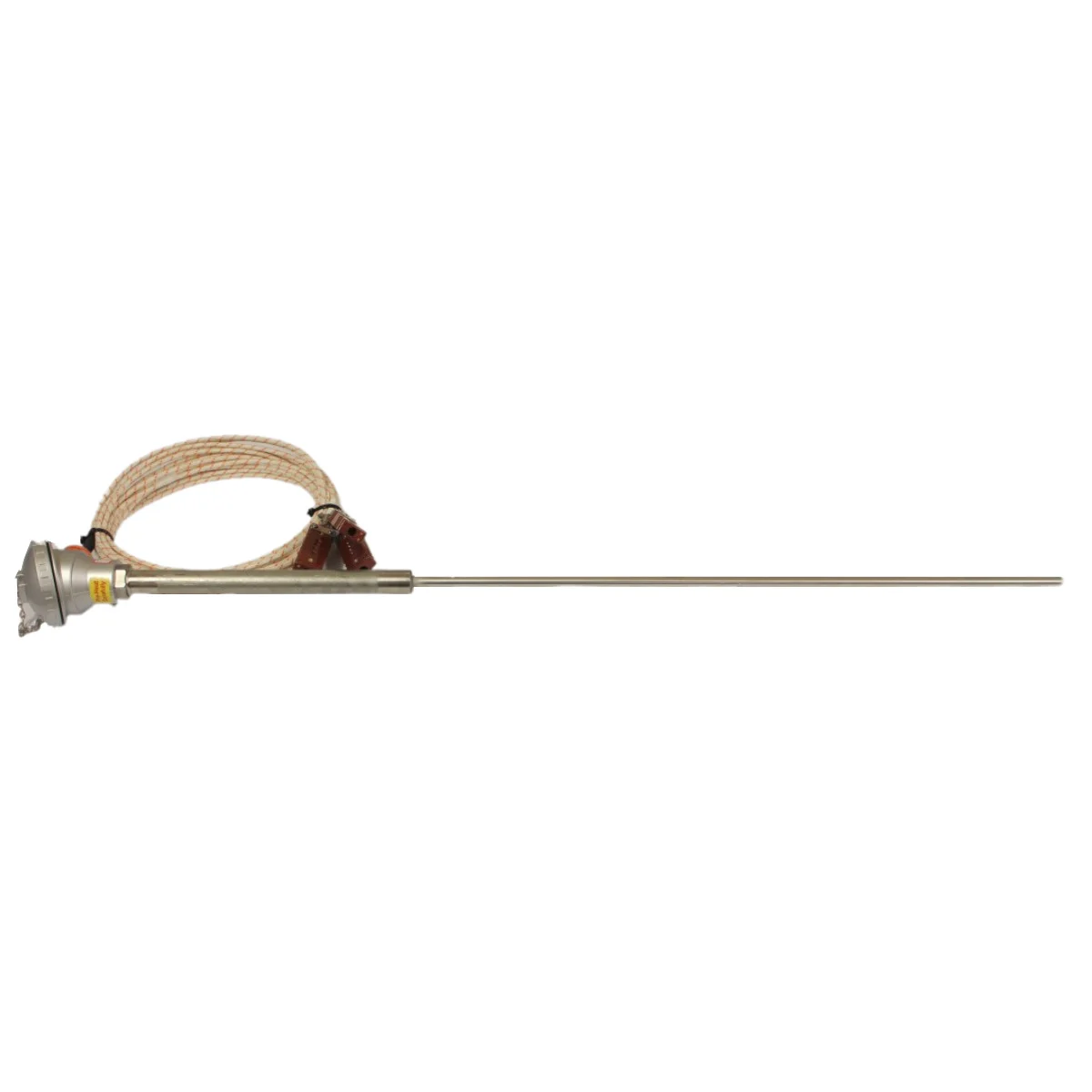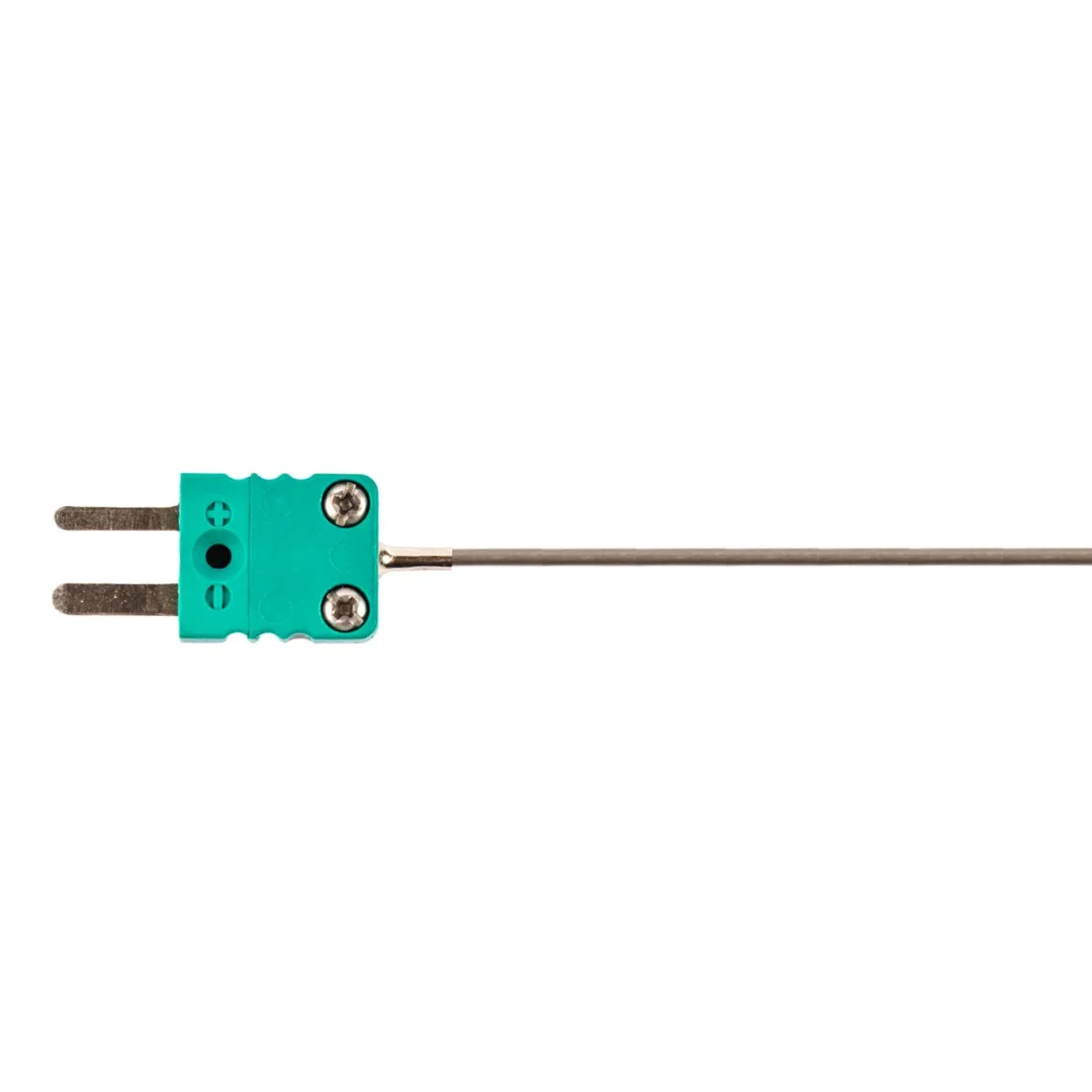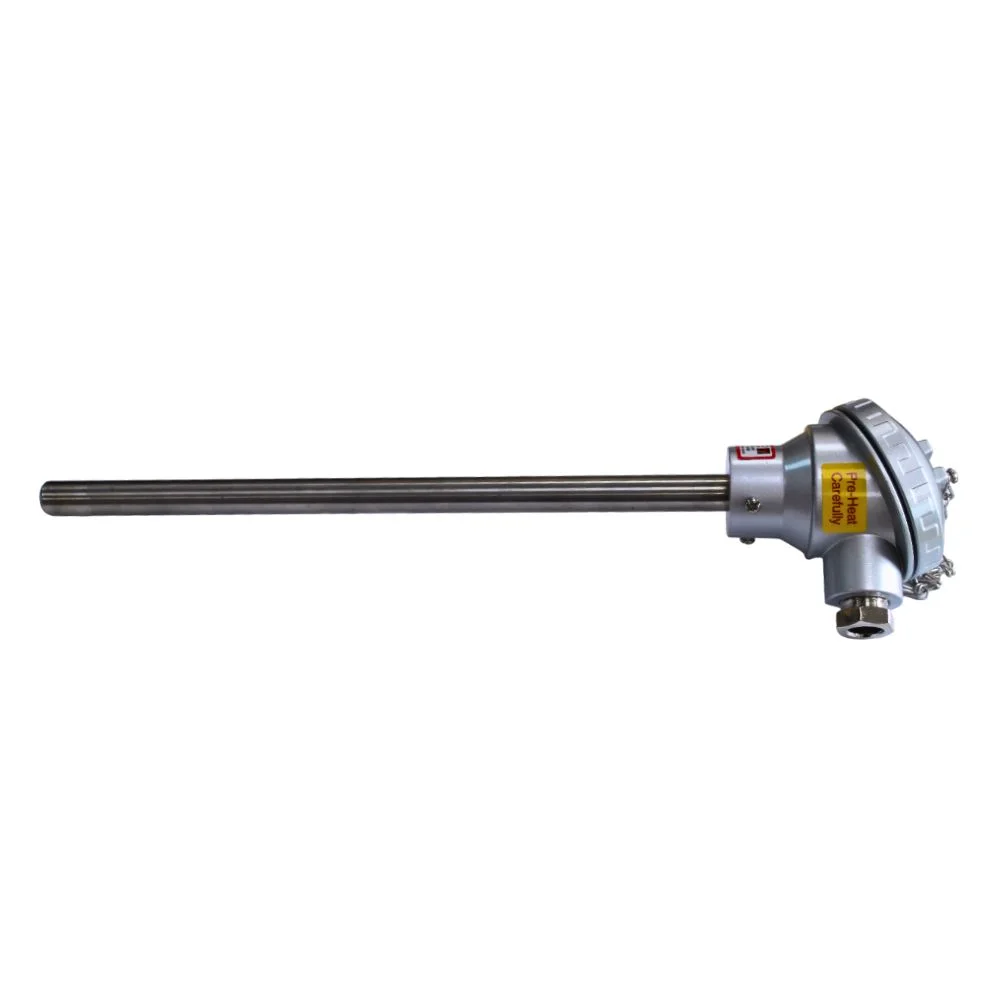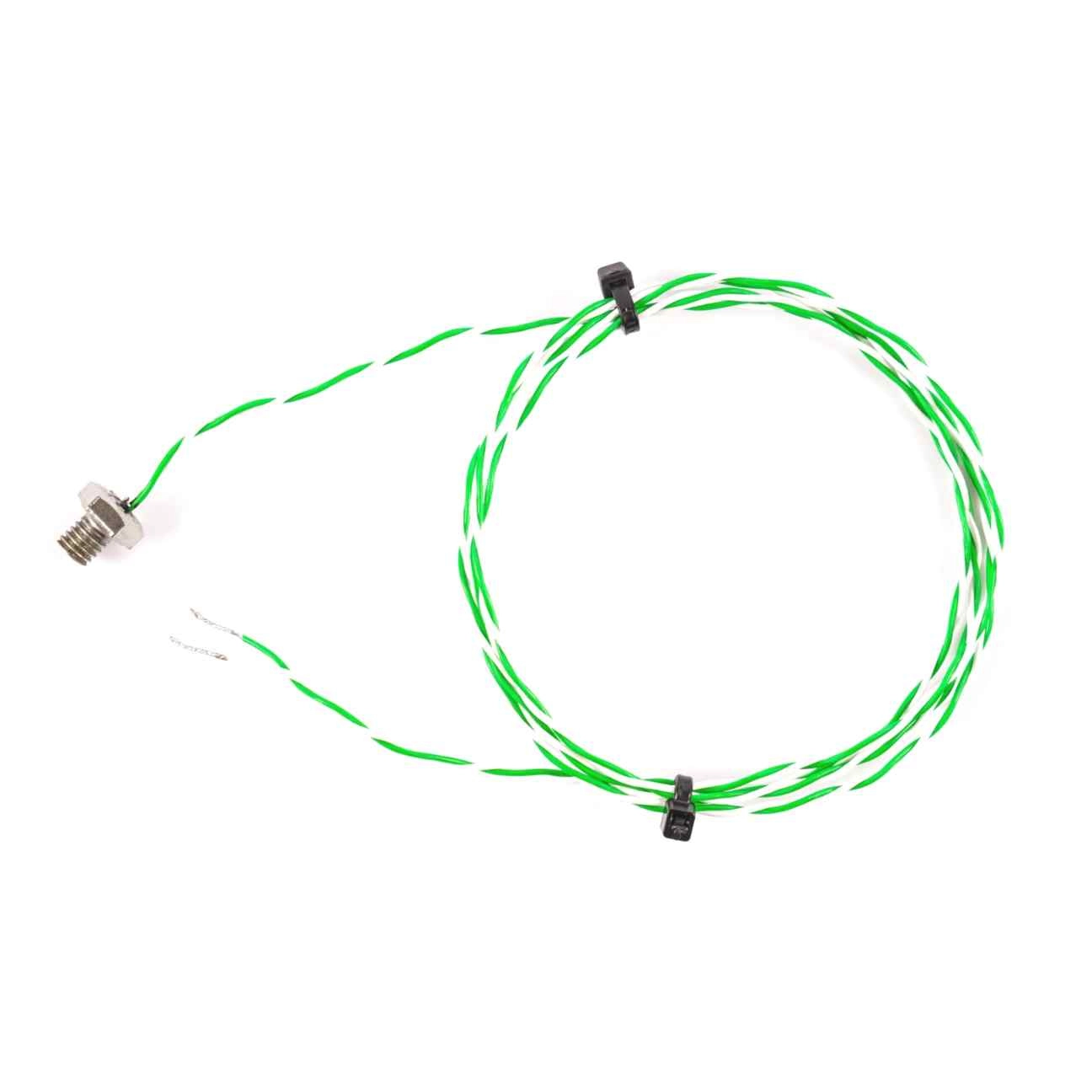What Is A Thermocouple And How Does It Work?
TL;DR — Quick Summary
- Thermocouples are temperature sensors made from two different metal wires joined at one end.
- They generate a voltage based on the temperature difference between the hot junction and a reference point.
- No external power is needed; they operate via the Seebeck effect.
- Common types include B, E, J, K, N, R, S, and T, each suitable for different temperature ranges and environments.
- Used in industries like food, aerospace, manufacturing, and refineries.
- Advantages include durability, cost-effectiveness, and wide temperature range.
- Common issues include drift and cold junction compensation.
- Thermocouples differ from thermistors in operation, accuracy, and applications.
- Thermowells protect thermocouples in harsh conditions.
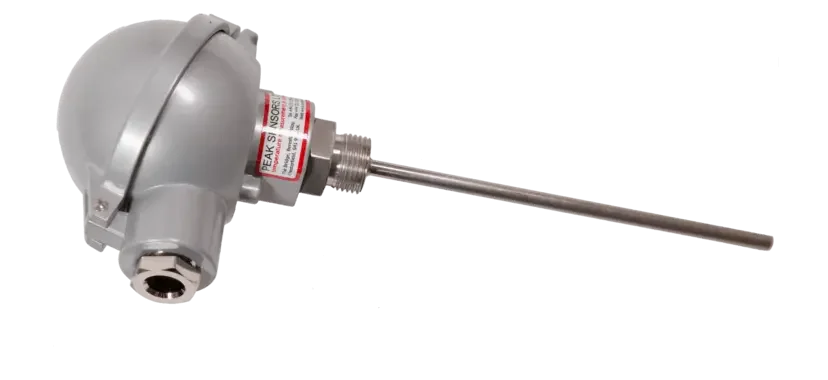
What Is a Thermocouple?
A thermocouple is a temperature sensor—an electrical device—used to measure temperature accurately. It consists of two different types of metal wires joined together at one end to form a junction. When this junction is heated or cooled, it generates a small voltage, known as a temperature-dependent voltage, which corresponds to the temperature at that junction. Thermocouples come in various styles, including probes with connectors, bare wires, and specialised sensor designs.
What Is the Purpose of a Thermocouple?
Thermocouples are designed to measure temperature across numerous industries and applications. From industrial manufacturing and chemical processing to everyday household appliances, thermocouples provide reliable temperature readings efficiently and cost-effectively.
How Does a Thermocouple Work?
A thermocouple works based on the Seebeck effect. It consists of two dissimilar metal conductors joined at one end, forming a “hot junction.” The other ends are connected to a measuring instrument, forming a “cold junction.” The voltage generated by the thermocouple depends on the temperature difference between these junctions. Because the metals conduct electricity differently, a measurable electromotive force (EMF) is produced, proportional to the temperature gradient.
Where Does a Thermocouple Get Its Power?
A thermocouple does not require an external power source. It generates its own voltage signal from the temperature difference between the hot and cold junctions. This self-powered feature makes thermocouples highly reliable and simple to use.
What Is a Thermocouple Used For?
Thermocouples are incredibly versatile and widely used due to their:
- Cost-effectiveness
- Robustness
- Ability to measure high temperatures
- Small size and fast response time
- Resistance to vibrations and harsh environments
Typical applications include:
- Home appliances
- Food processing and safety monitoring
- Aviation and automotive engine sensors
- Furnace and industrial process temperature monitoring
Thermocouples for Specific Applications
- Low Temperature: Types T, N, K, and E measure temperatures as low as -200°C.
- Molten Metal: Types N, K (base metal), and S, R, B (platinum-based) withstand extremely high temperatures and harsh environments.
- Food Industry: Penetration probes, clean-in-place sensors, and oven controls help maintain food safety and quality.
- Furnaces: Thermocouple selection depends on sheath material, mounting style, atmosphere, and temperature range.
Different Types of Thermocouples and Their Temperature Ranges
| Type Materials | Temperature Range (°C) | Typical Applications |
|---|---|---|
| B Platinum (30% Rhodium) & Platinum (6% Rhodium) | 1370 to 1700 | Glass production, high-temperature processes |
| E Chromel & Constantan | 0 to 870 | Power plants, inert environments |
| J Iron & Constantan | 0 to 760 | Injection moulding, inert/vacuum |
| K Chromel & Alumel | 95 to 1260 | Refineries, neutral or oxidising atmospheres |
| N Nicrosil & Nisil | 650 to 1260 | Petrochemical, resistant to degradation |
| R Platinum (13% Rhodium) & Platinum | 870 to 1450 | Sulphur recovery, high stability |
| S Platinum (10% Rhodium) & Platinum | 980 to 1450 | High-temperature industrial uses |
| T Copper & Constantan | -200 to 370 | Cryogenics, food production |
What Happens If a Thermocouple Fails?
Thermocouples are simple devices and usually either work or do not. Failures are rare but can occur. Most modern instruments detect thermocouple failure when no signal is present, prompting safety measures such as shutting off heaters or cooling systems. Regular calibration and maintenance help prevent unexpected failures.
Common Thermocouple Issues
- Cold Junction Compensation: Thermocouple readings assume a cold junction at 0°C, but real-world conditions vary. Instruments usually compensate automatically.
- Thermocouple Drift: Prolonged exposure to high temperatures causes material degradation, affecting accuracy. Replacement is necessary.
- Cost of Rare Metals: Platinum-based thermocouples are expensive but necessary for high-temperature applications.
Advantages of Thermocouples
- Simple and rugged design
- Wide temperature measurement range
- Cost-effective and easy to manufacture
- Suitable for harsh and confined environments
- Capable of measuring small objects or high-vibration areas
How to Set Up a Thermocouple Correctly
- Ensure the thermocouple type matches the measuring instrument.
- Use compensating or extension cables compatible with the thermocouple type.
- Position the hot junction carefully to avoid errors from radiant heat or conduction.
- Fully immerse the junction in the measured medium for accurate readings.
What Materials Are Used in Thermocouples?
Common thermocouple materials include:
- Nickel and platinum (high-temperature stability)
- Copper
- Iridium
- Constantan (copper-nickel alloy)
- Chromel (nickel-chromium alloy)
- Alumel (nickel-aluminium alloy)
- Iron
- Rhodium
How Many Wires Does a Thermocouple Have?
A thermocouple consists of two wires made from different metals or metal alloys, joined at one end to form the measuring junction. For example, a Type K thermocouple has a positive wire made of chromel (nickel-chromium alloy) and a negative wire made of alumel (nickel-aluminium alloy).
Frequently Asked Questions (FAQs)
How long do thermocouples typically last?
Lifespan varies by application and environment, but proper installation and maintenance can extend use for years.
Can thermocouples measure very low temperatures?
Yes, types T, N, K, and E can measure temperatures down to -200°C.
Thermocouples for Molten Metal
Molten metal temperature measurement is very difficult, because of the severe conditions and very high temperature. Therefore, for that purpose only Type N and K Base Metal and Types S, R and B Platinum thermocouples can be used.
Why do thermocouples need cold junction compensation?
Because the reference junction temperature affects voltage output; compensation corrects for this to provide accurate readings.
Are thermocouples accurate?
They provide reliable accuracy over wide temperature ranges but may require calibration for precision applications.
What happens if a thermocouple wire breaks?
The instrument will detect no signal, triggering an error or safety shutdown.
Can thermocouples be used outdoors?
Yes, especially when protected by thermowells or suitable sheaths to guard against environmental damage.
Conclusion
A thermocouple is a simple and fairly inexpensive temperature sensor used to measure temperature. Due to its versatility, it is used in a vast array of applications from food processing to aircraft engines.
There are mainly eight different types of thermocouple temperature sensors: B, E, J, N, K, R, T, and S type. Each type has its own unique properties and capabilities making it suitable for a specific set of applications and industries.
View our thermocouples
If you want to order a temperature sensor or you are unsure exactly what you need, get in touch and we can help you.

